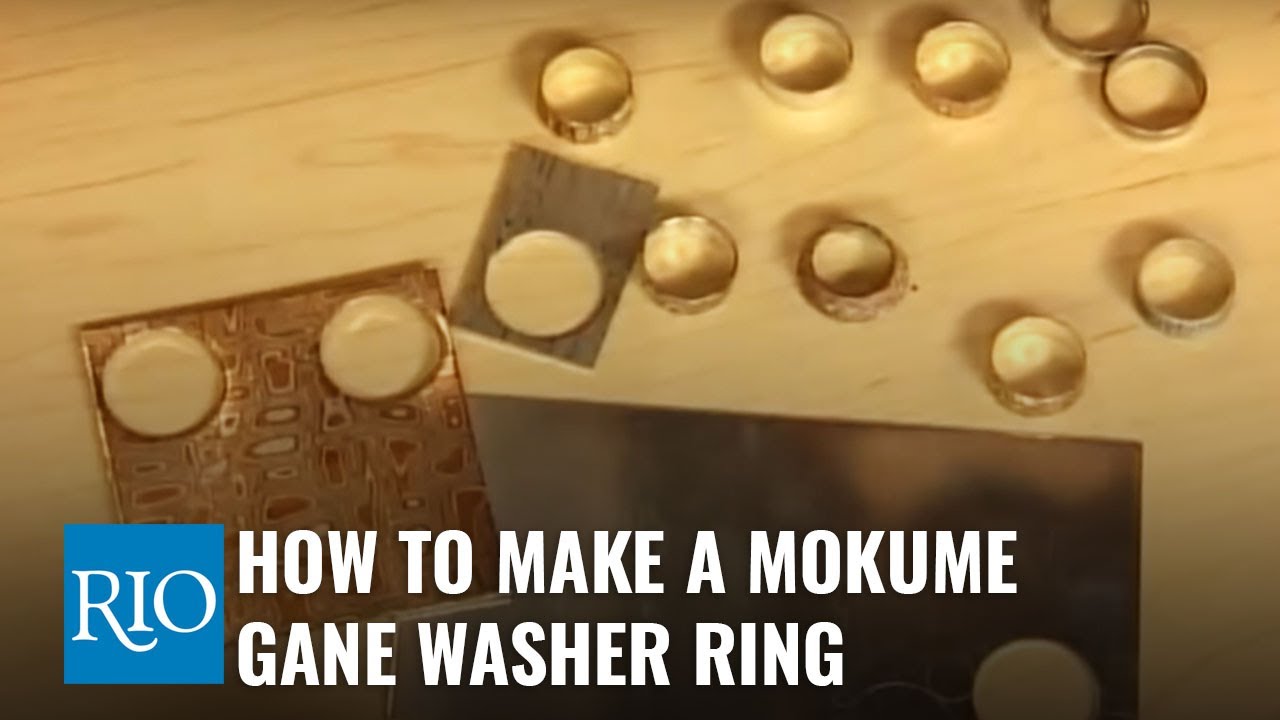Hello and good afternoon.
I am fascinated by the whole mokume gane metal working technique and
have been researching this for a while now (have not began applying
this yet as I’m waiting until I get my larger work space later this
year).
I understand the basic traditional process of a single strip being
made but always wondered how seamless rings were constructed until I
ran across a german studio’s website that had pictures of their
rings. They showed photos of flat discs (like large washers) and then
I finally realized they cut these out and then pressed them into the
3 dimensional ring shape. (I’m assuming they make some kind of die
and use a hydraulic press to make it into a ring) The site is in
German so I might have missed any explanation.
I have a few questions about this. (there were no other photos of
the process, just the flat washer like pieces of finished mokume
gane).
How does anyone who uses this method deal with waste? With the
traditional method, you create your billets, forge them, roll them,
etc, and then you simply use it. With this “washer” I saw, they must
cut out the discs and have some waste from the corners and inside of
the “washers”. Do they make earrings from the inner cuts maybe? Or do
they send it all back to the refinery?
My other question is…
I can’t for the life of me determine what shape the die would be…
without anyone giving away proprietary drawings or designs, what
would the die look like? A traffic cone type of shape? Very
interesting method but not sure how it can be done efficiently
without a lot of wasted billet from the “washer” cut.
Until I saw these flat “washers”, I assumed seamless rings were
completely CNC machine cut directly into a ring.
Like they say, there is more than one way to do something.
thanks for any input…
Rick in Cocoa Beach
Rick,
Seemless mokume gane wedding bands can be made by cutting lengthwise
down a billet (that has been previously twisted, distorted and carved
into then rolled into a square cross section once more). Drill a hole
in the billet near the end and saw down the length, stopping before
you get to the end. You can then stretch this out carefully using a
punch and then your ring mandrel to get it into a circular shape. The
ends will have to be filed smooth as they will be nubs that protrude
from your otherwise circular piece.
Scott Garrison
Richard,
Here are some links to help you out:
Shaw Communications [PDF file]
Sales, Order a handcrafted Silver Coin Ring
PowWeb
Jamie King
Hey, I took a class some time ago with Steve Midgette. Spelling may
be wrong. His book, Mokume Gane in the small shop was very helpful.
His method for rings produced wonderful results. Check his book for
cutting the waste.
Brenda
Richard,
Check out the Rio Grande website - from memory they have a tutouial
on how to mke the rings from washers.
Roger
Rick, You do not need a die to make the seamless ring. You make the
hole in the washer way smaller than the finger size - you need to
experiment with this at the first. You use a mandrel and a hammer to
create the ring. Start hitting close to the hole and work your way
down. Anneal if necessary. I made rings like this if there cannot be
a seam in the ring, for example for the specific religious reasons.
Jacques Pinaud
Hi Richard about the disk/ring - there is a youtube from rio
hope this helps
Barbara on an island where there is clam before the storm, expecting wind
gusts of 100 kmph
Rick, The seamless-ring project needn’t be complicated. Using your
steel “circle-cutter” cut out your original disk, insert that into
the appropriate area to cut a smaller disk from that, leaving you
with a “washer”. Anneal. Then put it on your steel ring mandrel, and
start your hammering, annealing, hammering process, until you have a
the ring you want.
Rio Grande has an excellent video on the process. It’s fairly fast
and certainly simple, requiring no fancy tools.
Gary Strickland, GJG
Rick -
Coincidentally, I just made one of these bands. Mine were hammered.
You can read my blog post about it at
I got the idea from a you-tube video from Rio Grande that gave step
by step directions. You can find it heRe:
Good luck!
Gena Robinson
Hi
I would do it this way less waste than the washer method. Its the
old black smiths method of producing a seamless circle.
Hamish
I would do it this way less waste than the washer method. Its the
old black smiths method of producing a seamless circle.
I’d think you’d want to choose one method over the other not by
whether it produces waste, but rather whether you can get the
patterns you want. Each method will give quite different forging to
the metal, and thus different patterns… The less waste idea is
great when just using a single metal, but with Mokume’s patterns and
variations, the waste would become secondary, at least for me.
Besides, using the washer method, you can still use the cut out
center disk to make something else, so there’s somewhat less waste
than it looks like.
Peter Rowe
